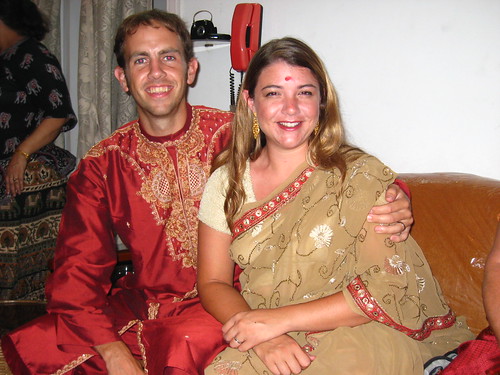One thing that has interested me in India is trying to figure out the amount of money that people make and spend compared to the US. I find this to be a topic of some interest, since in the software business companies are constantly trying to leverage India. However, I do not feel like many people actually have an idea of what the savings actually are. The following is all information that I have gleaned from different conversations since I have arrived. It is therefore probably not accurate, but may at least be interesting.
If we look at it first from a purely statistical standpoint, the GDP per capita of the US is 43,444 dollars per person and for India it is 3,737 dollars per person. So by this reference the average US person should make about 11 times more then the average Indian. For the purposes of this article I am going to think of it as around 10.
In terms of how much money people make, my impression is as follows (everyone talks in terms of per month here, so I will go along). I think a service worker, like a guy who works in a mid range hotel cleaning and serving etc. makes around 4000 rupees a month, or 100 dollars. This figure I got from a rural area, so it may very well be higher in a city. I have also been told that 20,000 - 40,000 rupees a month (500 - 1000 dollars) is what someone with a good white collar job makes. Supposedly this is enough to get you a decent place to live and a cheap car or motorbike in Chennai. I have also been told that making 1 lakh per month, aka 100,000 rupees (2,500 dollars) is what it takes to be making a lot of money. I would assume this means that you have a nice house or flat in a new development and a nice car. I would assume most likely a servant as well. These numbers do make sense more or less. Someone who makes 25,000 dollars a month in the US is very upper middle class/upper class. The 40,000 seems a little high since that would be 10,000 dollars a month in the US. That is definitely a little more like upper middle class. As for the hotel worker, that would only be 1,000 dollars a month in the US, which is low since I am pretty sure people in that strata make around 20,000 a year. This is not surprising though since there are a large supply of such workers in India and limited demand.
I also looked up recently the price of transport. A Tata Indica econobox costs around 3-4 lakhs here (7,500 to 10,000 dollars) and an Ambassador is around 5 lakhs (12,500 dollars). An imported car mid-range car like a Honda Accord, which seems incredibly sleek and luxurious in India, runs a whopping 15 lakhs (37,500 dollars). Pretty steep by US standards. I am pretty sure this has to do with import duties. On the other hand a common motorbike here, the Hero Honda Splendor, only runs you a mere 40,000 rupees (1,000 dollars). Seeing how cheap these motorbikes are compared to the cars, which are not very discounted to the US, you can see why the motorbike is dominant as the transportation of the common man.
As for consumer goods, a bottle of coke runs you 15 rupees (38 cents). It is 25 rupees (63 cents) for diet, which is particularly infuriating to me. A one liter water is 10 rupees (25 cents) and a bag of grapes costs about 20 rupees (50 cents). We pay around 120 (3 dollars) for a box of cereal and 80 (2 dollars) for a 1 liter box of irradiated milk.
If you want to eat out, a all you can eat lunch at a working man's restaurant costs around 50 rupees (1.25 dollars). Dinner at more of a mid-range kind of place usually runs around 140 a person (4 bucks) while Pizza Hut or another clean corporate kind of place is 250 (6.25 dollars). A top end 5 star hotel kind of deal will run you 750 a person (around 19 dollars).
The thing that I notice about this is that while it is true that the average Indian makes around 10 times less then in the US, the stuff that they need to buy is not that much cheaper. 1.25 for a good meal sounds cheap, but that is more then 11 dollars for lunch (by the 10 times multiplier, which would be a lot to spend in the US, even for a Indian buffet in Cambridge. The Coke is 38 cents, but if Coke was $3.80 in the US, people would certainly not drink nearly as much. Cars are especially bad because they do not cost that much less at all.
I am sure that this seems rather obvious, that the standard of living is less. I thought however that it would be nice to be a little more specific. I find it especially surprising how much less purchasing power even a professional person has, especially in the transport and mid to high end restaurant arena (60 dollars for Pizza Hut?). At these prices I can see the motorbike and homemade daal ruling India for quite some time.
Subscribe to:
Post Comments (Atom)

No comments:
Post a Comment